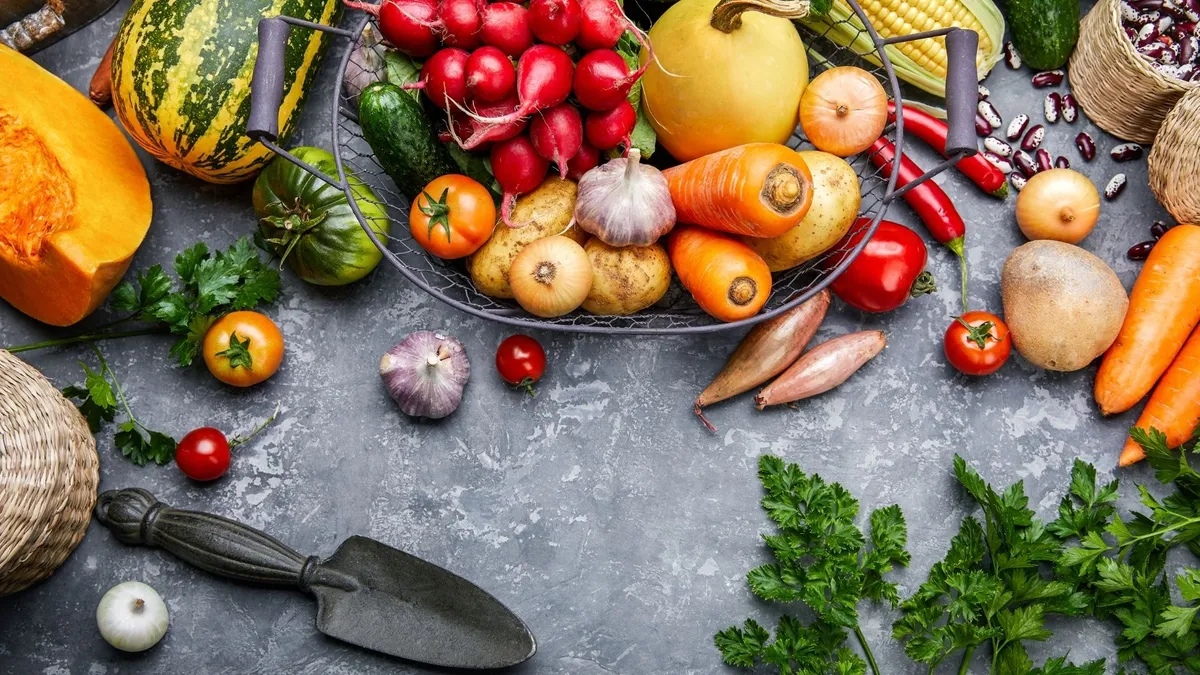Spring planting for a bountiful fall

March 28, 2022
You’ve moved into your new Ideal home and set up the interior just the way you want it. But now you’ve got that itch to plant … to dig into that Oklahoma soil full of clay … to reap a bountiful harvest.
Welcome to gardening in Oklahoma! Here’s some helpful information for wanna-be farmers who just can’t wait to get those seeds or plants into the ground. And the timing is perfect for cool-weather veggies and flowers. Here are some tips from Oklahoma State University Extension’s David Hillock and Brenda Sanders.
Home gardens that are well planned and properly managed can furnish flavorful, high-quality, fresh vegetables from spring through fall. Money invested in seeds, fertilizer, pest control, and a few tools is more than offset by fresh homegrown flavor and enjoyment, not to mention healthy outdoor exercise.
Choosing the site
The selection and preparation of the garden site is key to your home garden’s success. An area with full or near full sunlight with deep, well-drained, fertile soil is ideal. A water supply should be nearby, and the site located away from trees and shrubs that compete for light and water.
In the real world, however, many urban gardeners have a less-than-optimal small site on which to grow vegetables. Just because your space isn’t perfect doesn’t mean you can’t grow some wonderful plants. For example, areas with light shade can work for several vegetables, including beans, beets, broccoli, cabbage, cauliflower, chard, leaf lettuce, peas, potatoes, radishes, rhubarb, spinach, and turnips. You may not harvest a bumper crop, but you’ll have plenty to fill your dinner table.
If your site is poorly drained or the topsoil is thin or has too much sand or clay, another option to think about is raised beds or container gardening. With a raised-bed garden, good-quality garden soil should be used. Non-soil growing media are used in container gardens.
Planning the garden
Perennial vegetables (asparagus, rhubarb, winter onions, etc.) should be planted at one side or the end of the garden. Hardy vegetables planted early in the season should be grouped together so they can be followed with late-season plantings of the same or other vegetables. To make it easier to cultivate, group plants requiring similar care.
Recommended spacings listed on the OSU Extension website are based on best practices in the traditional row method of gardening. Smaller spacings can be used in containers or square-foot gardening. In these situations, compact varieties of plants such as tomato and eggplant are good choices.
The website chart groups veggies as cool or warm-season crops, indicating when they grow best. Cool-season crops may be planted earlier and do best under cool conditions, while warm-season crops grow better during warm temperatures. Hardy-type plants can go in the ground before the last frosts or freezes in the spring and are tolerant of cold weather in late autumn. Semi-hardy plants will be injured by a hard frost but will tolerate a light frost. Tender plants can be killed by a light frost but can still withstand cool weather, while very tender varieties are injured by even cool weather.
Gardening tips
For a successful garden, follow these few guidelines:
- Sample soil and have it tested every 3-4 years.
- Apply fertilizers in the recommended manner and amount.
- Add organic materials such as yard waste compost or composted manure to improve soil organic matter.
- Use recommended varieties.
- Thin plants when small.
- Use mulches to conserve moisture, control weeks and reduce fruit rots.
- Avoid excessive walking and working in the garden when foliage and soil are wet.
- Examine the garden often to keep ahead of potential problems.
- Keep the garden free of weeds and diseases.
- Control only those insects in the garden that are known to be pests.
- Wash and clean tools and sprayers after use.
- Rotate specific crop family locations each year to avoid insect and disease buildup.
- When possible, harvest vegetables during the cool hours of the day.
There are also some really good tips on the website to avoid common gardening mistakes. Also included on the OSU Extension website are other publications to help gardeners grow the perfect vegetable.
Happy planting!
Latest Posts
April 15, 2025
Newcomer’s guide to the new home construction process
March 20, 2025
Get to know Norman, Oklahoma: New Home Guide
March 20, 2025
Get to know Edmond, Oklahoma: New Home Area Guide
March 11, 2025
The Ideal Homes Difference, Rooted in Every Tree
March 11, 2025
Oklahoma Spring Gardening Guide
March 11, 2025
Expert Landscaping for Your New Home in Oklahoma | Ideal Homes
February 11, 2025
Valentine’s Date Night Near Your Ideal Home
February 10, 2025
Protecting Your New Home With the Best Warranty
January 21, 2025
Winterizing Your Sprinkler System
Previous Article

Why buy now?
Next Article

